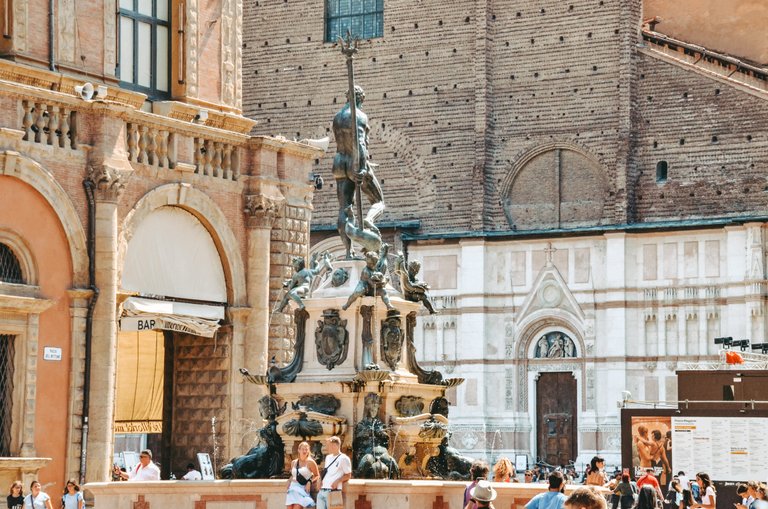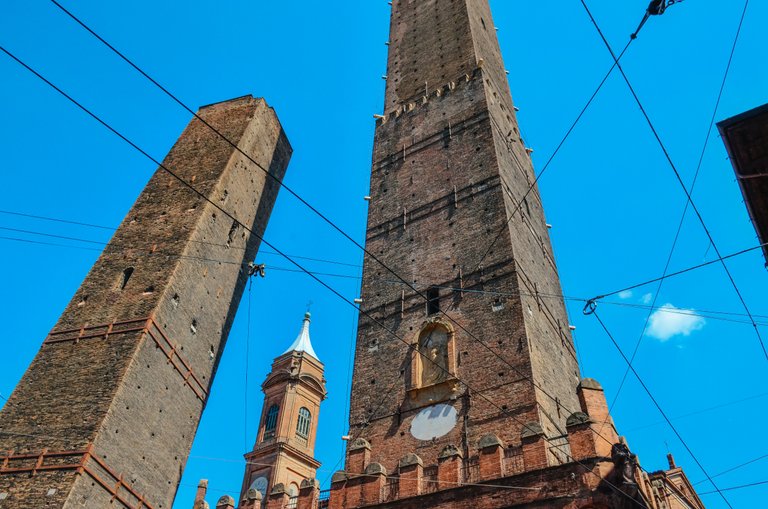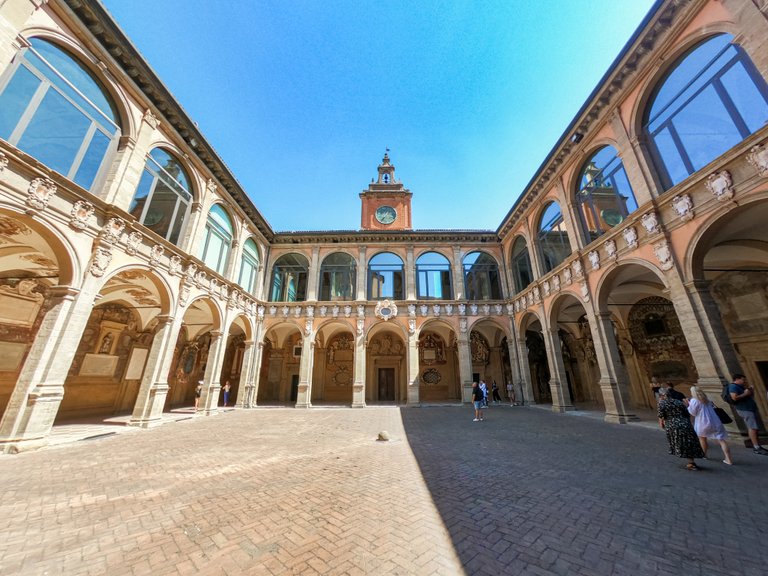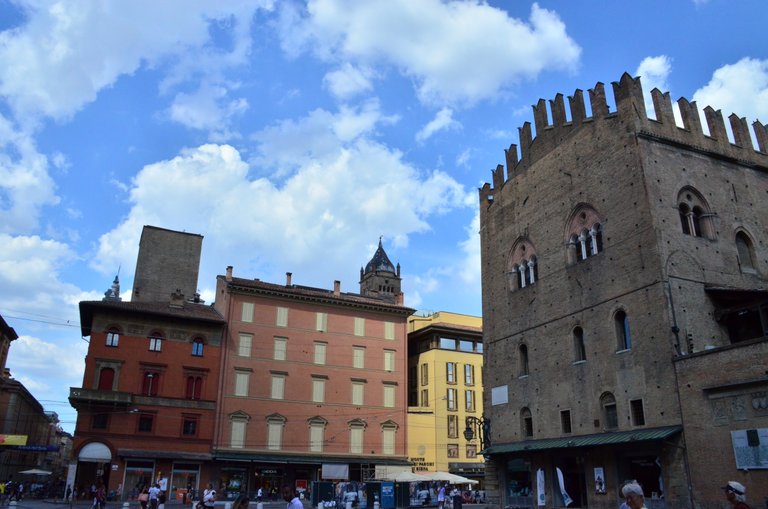The capital of the Emilia-Romagna province, Bologna, often known as the "city of knowledge," is distinguished and a must-see destination due to its fascinating architecture, long history, mythology, and oldest universities in the world.
#pinmapple
The city was established by the wise Etruscans, and during its chaotic history it ranked second only to the Vatican in importance. It also served as the interim location of the papal see.
.jpg)
However, this favored position was not unchangeable, and at one point, a public dispute with the Vatican over the validity of cities' importance arose. It prospered in art and culture at all levels during the seventeenth and eighteenth centuries, rising to become one of the most significant towns in Europe at that time.
Close to the Apennines, it's one of the best-preserved ancient cities in the country, and if you're into medieval things, it's a real treasure.


Giuseppe Garibaldi, (born July 4, 1807, Nice, French Empire [now in France]—died June 2, 1882, Caprera, Italy), Italian patriot and soldier of the Risorgimento, a republican who, through his conquest of Sicily and Naples with his guerrilla Redshirts, contributed to the achievement of Italian unification under the royal house of Savoy. (https://www.britannica.com/biography/Giuseppe-Garibaldi/Retreat)

One of the first things I discovered was that the nicknames "la dotta, la grassa, la rossa" (the learned, the fat, and the red) given to Bologna by its inhabitants refer to the city's historical university, its delectable cuisine, and its long-standing ties to left-wing politics and the anti-fascist movement in Italy.
The arcades in this city are if there is anything that defines it. There are at least 37 kilometers of arcades in the old town. One of the finest ways to learn about a city is to pass through them.
The Padane plain, the Rhine valley, the city, and the Apennines can all be seen from the portico of San Luca, which comes highly recommended.
.jpg)
Every block, street corner, and building intersection in Bologna is interwoven with the city's living history, showcasing the city's medieval roots and Renaissance reinterpretations. Bologna sightseeing is an interesting, long ramble that combines the old and the beautiful, the gritty and the exuberant. People are immediately enchanted by Bologna because of its small maze of ancient alleyways, which is the center of the city's tourism industry.

The three interconnected open squares are at the heart of the action. We began at Piazza Nettuno, which is home to the Salaborsa Library and the symbolic Fountain of Neptune.

.jpg)
We'll start with the statue of Neptune. The first thing our guide showed us was the position from which we look at the statue and whether we see anything interesting. In fact, it teaches us that some things are not what they seem. :)
Fountain of Neptune

Can you see what she was trying to show us? Haha
The statue of Neptune is known as "il Gigante" (the Giant), or "al igànt" in Bolognese dialect. According to the inscription at the fountain's base, it was built in 1566 "to serve the people," namely to beautify the Piazza Maggiore because it was a stop on the route between the Archiginnasio and the Palazzo del Comune. Cardinal Carlo Borromeo was responsible for wanting the Piazza Maggiore improvements; the work was meant to symbolize Pope Pius IV's happy rule, his maternal uncle.
Just steps from the city's political core, the fountain was an instant hit with vegetable sellers, launderers, and artisans, so much so that women and children caught using it for bathing received 50 lashes, while men received " (a torturous and crippling procedure involving tying the arms behind the back and cranking up on them to the point of dislocation).

Giambologna is said to have wanted to fashion Neptune with larger genitalia but was met with Church opposition. The sculptor, however, was unmoved: he designed the statue so that from a certain angle, the thumb of the outstretched left hand lines up with the groin area, giving the appearance of an erect penis. According to the prelates, the sight so disturbed the women of Bologna that the Church had to put bronze pants on the statue. Actually, the entire fountain has an erotic quality to it: just look at the voluptuous nymphs spraying water on their breasts!


.jpg)
The trident the god is brandishing has become one of the world’s most well known symbols: that of Maserati, the Bologna based automobile manufacturer.
The Basilica of San Petronio in Piazza Maggiore
.jpg)
.jpg)
The Basilica of San Petronia in Bologna is a massive Gothic-style religious basilica that is made of brick and has only half of its facade in marble. The basilica is dedicated to Saint Petronius, the patron saint of the city. It was not consecrated until 1954, despite the fact that its construction began at the end of the 14th century.
San Petronio is one of the world’s largest churches (the sixth largest in Europe): it’s 132 meters long, 60 meters wide and 45 meters high. Construction began in 1390, based on a project by architect Antonio di Vincenzo. Work on the basilica continued for centuries, with a second project presented in 1514 envisioning a building that would measure 224 meters in length and 150 meters in width, bigger than St. Peter’s in Rome. But the Catholic Church would not see to that. Still, San Petronio truly feels grand and you’ll fully realize how big it is only when you go inside.
The Bolognini Chapel
We want to point out the Bolognini Chapel, one of the most important: it has frescoes that are attributable to the bolognese artist Jacopo di Paolo. He made works like the Nativity of Christ, the departure of the Three Wise Men, but he is famous for his raffigurations of Paradise and Hell.
The Basilica of San Petronio is located on Bologna's main square, Piazza Maggiore, and is one of the first places you'll see when you arrive, it is next architecture you see after the ne. It is the most beloved church of the Bolognesi, a symbol of the city today as it was in the past, when it was used as a public space rather than a religious one.
Do you also love to visit churches when you travel? I really like it, especially I adore Gothic churches. I love frescoes, painted windows, silence, a place where some people find comfort, warmth and hope.
Piazza Santo Stefano
.jpg)
Piazza Santo Stefano is a symbol of Bologna, commonly referred to as a square despite the fact that it is actually an open space leading from Via Santo Stefano to the complex of the same name, also known as the "Seven Churches."
The square, which is dominated by the Basilica of Santo Stefano, has Casa Berti, Palazzo Isolani, and Palazzo Bolognini Isolani on one side and the 16th century Palazzo Bolognini Amorini Salina on the other.

Today, the square is frequently used for cultural events and concerts.
Towers of Bologna
For reasons that are still unknown, an incredible number of towers were built throughout Bologna during the 12th and 13th centuries, creating an urban skyline that resembles modern-day Manhattan. Only 22 people remain today.
One possible explanation for the vertical construction craze is that wealthy families used the towers as a symbol of their wealth and status, as well as for defensive purposes to protect their property. Some of the smaller structures were constructed as homes.
.jpg)
The precise number of towers built in medieval Bologna is unknown. It has been suggested that the city had up to 180 towers in the 13th century, but a more realistic figure is probably around 100, which is still very impressive given how difficult it was to build such tall structures with the limited resources of medieval Italy.
After the 13th century, some towers were demolished, others collapsed, and many were repurposed as residential or commercial structures, or as prisons. The city walls from the 14th century were demolished in the early twentieth century.

The most famous of the remaining towers are the "Two Towers": the 320-foot Asinelli Tower and the truncated Garisenda Tower, both of which are leaning.


Torre Garisenda, which was built at the same time as the previous tower, is distinguished by its lower height of 47 meters. It is famous for its steep overhang caused by subsidence of the land and foundations, and Dante mentioned it in Canto XXXI of the Inferno. It was lowered in the 14th century for fear of collapsing and is currently being restored.
Bologna Is Every Palette Shade of Orange
Blazy. Dusty. Vermillion. Flame. If you brought an orange palette swatch to Bologna, you would almost certainly find a building or wall that matched every shade. Where should you go in Bologna? Instead of following a route or checking off a list of sites, let yourself be hypnotized by the warm colors that make Bologna feel inviting, with its peeling layers of rustic charm.
.jpg)
.jpg)
.jpg)

Teatro Anatomico
The fascinating 17th-century Teatro Anatomico, housed in Palazzo dell'Archiginnasio, is where public body dissections were held under the sinister gaze of an Inquisition priest, ready to intervene if proceedings became too spiritually compromising. A central marble-topped table is surrounded by cedar-wood tiered seats, and a sculptured Apollo looks down from the ceiling.


.jpg)

Two skinless figures carved into the wood support the canopy above the lecturer's chair.
The Sala dello Stabat Mater, a grand former classroom down the hall and covered by the same entrance ticket, leads to a long line of 10 ancient classrooms now housing the repository of the Archiginnasio library (off limits but gorgeously visible from the roped -off doorway).
Although I could talk forever about Bologna, I believe that the words have reached their end and that what remains are a collection of photographs, each of which is lovely in its own way and tells the tale of Blogna.

.jpg)
.jpg)
In the following posts, I will share beautiful photos from other cities in my beloved Italy with you.
I hope you had as much fun reading this post as I did writing it, reliving the memories through the story and photos.
“I find other countries have this or this, but Italy is the only one that has it all for me. The culture, the cuisine, the people, the landscape, the history. Just everything to me comes together there.”
— FRANCES MAYES - AMERICAN NOVELIST, MEMOIRIST AND PROFESSOR














